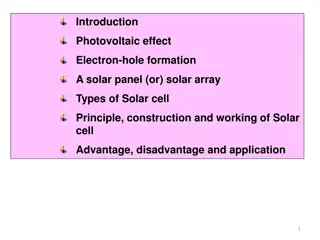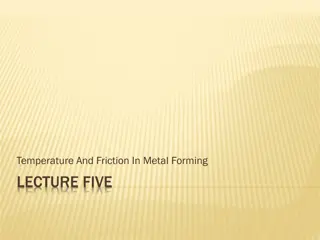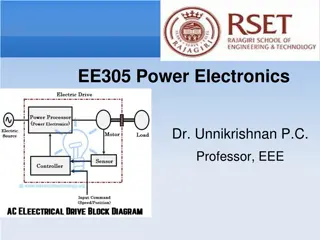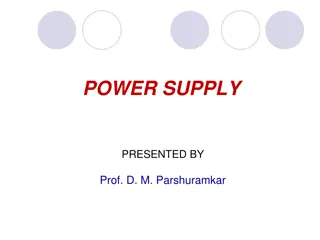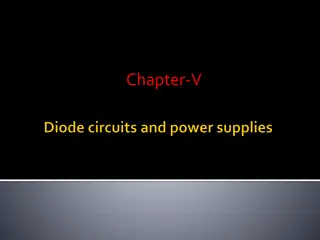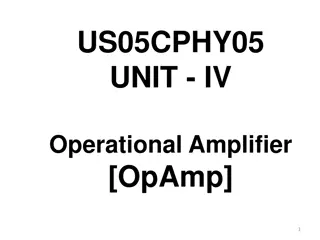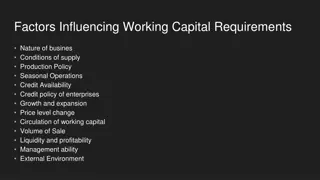Understanding Rectifiers: Types and Working Principles
A rectifier is a crucial electrical device that converts AC to DC, allowing current to flow in only one direction. Explore the different types of rectifiers like half-wave and full-wave, along with their working principles and efficiency considerations. Dive into the explanation of rectification processes, calculations for output voltages, and practical circuit implementations for both half-wave and full-wave rectifiers.
Download Presentation

Please find below an Image/Link to download the presentation.
The content on the website is provided AS IS for your information and personal use only. It may not be sold, licensed, or shared on other websites without obtaining consent from the author. Download presentation by click this link. If you encounter any issues during the download, it is possible that the publisher has removed the file from their server.
E N D
Presentation Transcript
introduction A rectifier is an electrical device that converts alternating current (AC), which periodically reverses direction, to direct current (DC), which is in only one direction, a process known as rectification.
Types of Rectifiers Half wave Rectifier Full wave Rectifier Bridge Rectifier
Half wave rectifier In half wave rectification, either the positive or negative half of the AC wave is passed, while the other half is blocked. Because only one half of the input waveform reaches the output, it is very inefficient if used for power transfer.
Output dc voltage calculation The output DC voltage of a half wave rectifier can be calculated with the following two ideal equations
Full wave rectification For single-phase AC, if the transformer is center-tapped, then two diodes back-to-back (i.e. anodes-to-anode or cathode-to-cathode) can form a full-wave rectifier.
Full wave rectification In a circuit with a non - center tapped transformer, four diodes are required instead of the one needed for half- wave rectification.
formula The average and root-mean-square output voltages of an ideal single phase full wave rectifier can be calculated as:
Bridge rectifier A bridge rectifier makes use of four diodes in a bridge arrangement to achieve full-wave rectification.






